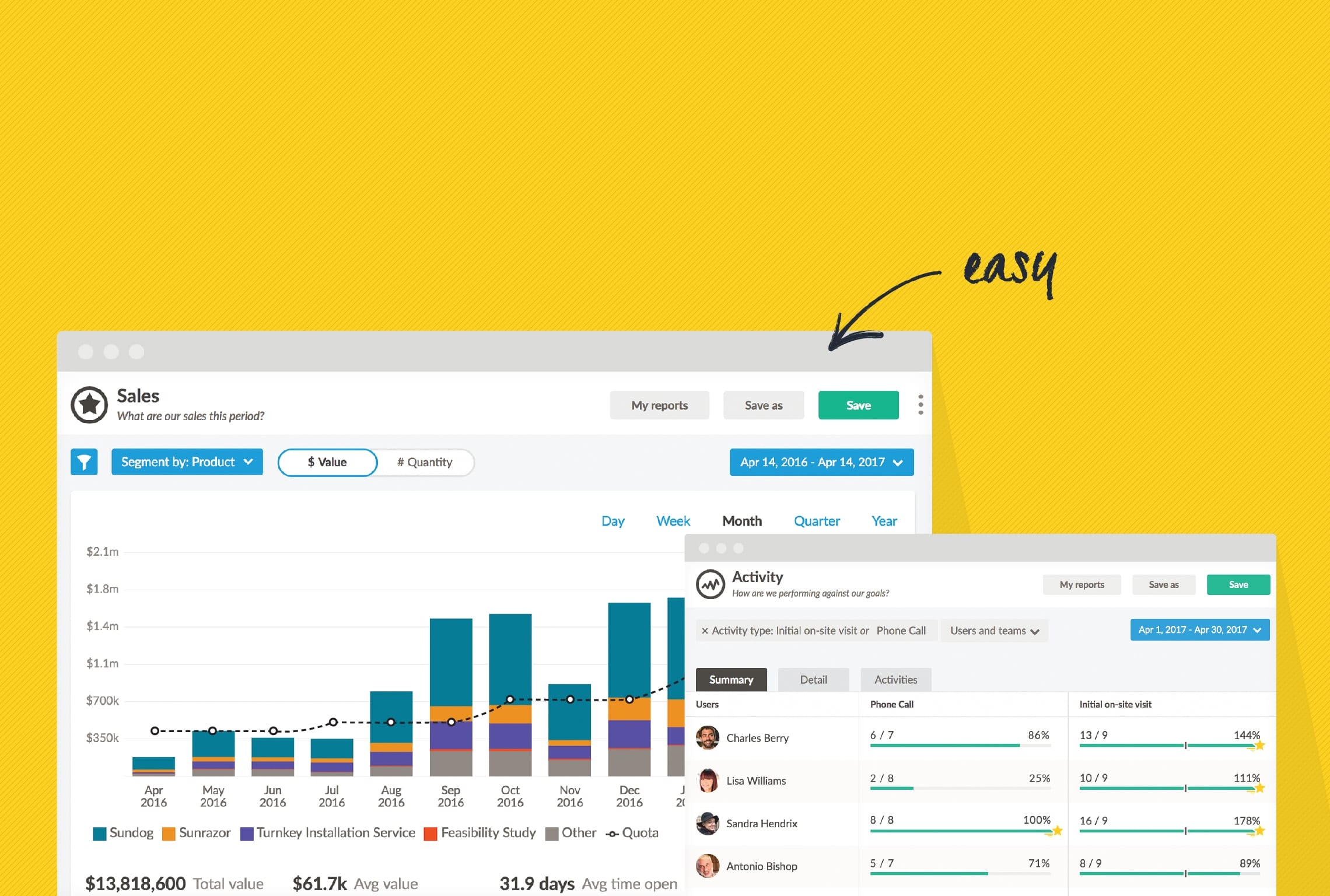
Warm emails outperform cold outreach by building relevance and trust.
Warm prospecting uses personal context—like mutual connections or recent achievements—to make outreach feel like a one-on-one conversation, leading to higher response and conversion rates.
Effective warm emails are short, personalized, and value-driven.
Focus on a clear reason for reaching out, show genuine understanding of the prospect’s business or challenges, and offer specific value in under 150 words. End with a conversational call to action, not a hard sell.
Consistency and follow-up are critical.
Most responses come after the second or third touch, so use thoughtful follow-ups and test subject lines, timing, and messaging regularly to optimize results.
Creating a sense of familiarity goes a long way in email outreach, and warm emailing helps you do that. Once you understand how warm email prospecting works, you’ll be able to generate a steady stream of leads for your business, book more sales calls, and close more deals.
The best sales emails sound like they came from a trusted friend.
That requires the sender to understand who their recipient is and what they want. Otherwise, you’re just another stranger clogging their inbox.
This article explores warm email prospecting, its benefits, and how to craft exceptional warm emails for the best results. You’ll get all the warm sales email tips you need, right here.
Let’s take it from the top…
💬 ChatGPT
🔍 Perplexity
🤖 Claude
🔮 Google AI Mode
🐦 Grok
Email prospecting is a form of outreach carried out by sales teams and involves sending emails to prospective customers, encouraging them to take a desired action. The goal is to gain the prospect’s interest and response, leading to a possible sales call or meeting appointment.
Your sales team would use these emails to introduce your business to prospects and highlight how your product or service might benefit them. Sales team members use information gathered through initial prospecting research to convince potential customers that meeting with them would be in their best interests.
Teams can employ different prospecting techniques, including cold emails and warm emails. Either way, the idea is to connect via email, leading to a conversation, conversion, and lasting brand-customer relationship.
Perhaps you’re unsure whether email prospecting is the best approach for your sales process. Granted, phone calls are quicker and typically offer you an immediate response. However, emails can be incredibly successful for prospect outreach and provide the following benefits:
Warm emailing is a targeted, personalized outreach strategy in which each email is handcrafted and written for one person only—as first defined by veteran copywriter and business coach Ed Gandia. Through extensive research, the sender positions themselves as a knowledgeable professional who can solve the recipient’s specific problems.
Just like warm calling, warm emailing efforts might also include a pre-contact touch—such as a targeted ad campaign or an intro email from a mutual contact—to make the recipient more amenable to opening and responding to your message.
Because these sales emails feel so much more relevant than the average cold email, they can dramatically impact response rates, booked sales calls, and closed deals.
Before we show you what the ideal warm email should look like, here are a few general concepts you should keep in mind to leverage this strategy successfully.
When email prospecting, it’s crucial to distinguish between warm and cold emails. But first, let’s define lead temperature in general to ensure we understand the difference.
Building and executing an effective warm email outreach campaign begins with understanding your target audience. Knowing the difference between a warm, cold, and hot lead is paramount when sending prospecting emails.
Here’s a basic outline of each to help you get your warm sales email outreach off on the right foot:
Now that we’ve explored the differences between warm, cold, and hot leads, we can delve into distinguishing between warm and cold emails. The following table should help to clarify what sets one apart from the other:
| Aspect | Warm email | Cold email |
| Definition | Personalized communication sent to a prospect with whom you have some familiarity or connection. | Unsolicited messages sent to recipients without any prior relationship. |
| Features | PersonalizationRelevanceUnderstanding of recipient needsReference to mutual connections or prior interactions | Focus on the product or serviceLack of personal touchGeneralized messaging |
| Example | “Hi [Name], I noticed you attended [Event]. I think we could help you with [specific challenge].” | “Hi, I’m reaching out to introduce our software that increases productivity by 30%.” |
| Response rate | Higher due to personalization and relevance. | Generally lower as it lacks a personal connection. |
| Engagement | Builds trust and encourages conversation. | Often fails to engage recipients on a personal level. |
| ROI | Higher ROI due to targeted outreach and relationship building. | Lower ROI as it requires more outreach to achieve similar results. |
An effective warm email contains specific elements. Incorporating these elements into your email prospecting efforts will help you secure higher response rates. Here are some tried and tested warm sales email tips to ensure all the core elements are accounted for.
Many sales reps never see success through their email prospecting efforts because they try and do too much in each message. When sending warm emails, you have one purpose and one purpose only: to start a conversation, preferably on the phone, with your prospect. That’s it.
In that sense, warm emails are no different than cold emails: You’re not trying to make a sale. You’re not trying to convince the recipient to start their free trial. You’re not even trying to prove to them that your company’s offerings are better than the competition. You’re simply trying to book a phone call or schedule a meeting with them.
When you understand this, everything becomes much easier.
Now that you understand the purpose of your email, it’s time to do research. You need to “know” the person you’ll be contacting: Which company they work for, the position they hold, the problems they have that your company’s product can solve, etc. You can find many of these details via LinkedIn.
Related: 6 tips for writing the perfect LinkedIn cold outreach message
A good prospecting tool helps you find pre-qualified leads before reaching out to them with your warm email campaign. For example, if you’d prefer to find sales managers who work in IT companies, a tool like ProspectorIQ can help you search your potential leads using filters for job title and industry. Add these contacts, and you can start your warm emailing from within Nutshell CRM – no manual data entry required.
The more you know about your prospects individually before contacting them, the better. Research allows your messages to sound highly relevant and personalized. It’s how you turn traditional cold emails into a strategic warm email prospecting system.
While researching, you’ll also want to look for what Ed Gandia calls a “meaningful connection.” (We’ll cover this in more detail later.)
Define your ideal customer and ProspectorIQ does the heavy lifting, so you can add new contacts to your CRM and start making more sales!

Brevity is essential when conducting warm email prospecting. In general, try to keep your warm emails short and sweet—around the 125-word mark, give or take.
Remember, your prospect didn’t ask you to contact them. They’re probably busy, and if they open up your message and see a giant wall of text, they’ll delete it without reading anything. 125 words should be enough to state the value your company brings to the table, establish some credibility, and make an ask to connect on the phone.
As we mentioned earlier, a pre-contact touch makes your recipients more familiar with you and more willing to open your initial email. That can take several forms:
Each of your emails should start with a meaningful connection—something relatable that ties you to the prospect. For example, perhaps you discovered via LinkedIn research that your prospect is frustrated by the HR software her company is currently using. Since you sell HR software, you’ve just uncovered a meaningful connection that directly bridges the gap between what you have to offer and your prospect’s pain point.
Not every meaningful connection needs to be so direct, though. For instance, maybe you discover that your prospect’s company just received a new round of funding. You could email your prospect, congratulate them, and tastefully mention that they could spend a portion of their new funds on your company’s products.
A meaningful connection can even be something unrelated to business. As a freelance copywriter, it’s my job to sell my writing services. I once secured a long-standing client due to a mutual love of cheese. That’s right, cheese.
After researching the company in question, I discovered that the marketing director was a bit of a cheese connoisseur. I happen to be, as well. In fact, my wife buys me a wheel of cheese for Christmas every year. It’s a quirky tradition that I love, and I decided to share the anecdote with my prospect in my warm email. It worked, we hit it off, and I wrote content for that client for a long time.
A meaningful connection is simply a bridge that builds trust with your prospects and connects you with them. It can be business-related or completely personal, but whatever it is, your prospect must find it relatable.
An eye-catching subject line can be the difference between a prospect opening your email and ignoring it altogether. One of the most successful approaches reported by marketers is to personalize the subject line, including your recipient’s first name.
For the best results, try to keep your subject line below 50 characters and steer clear of using overly “salesy” language that could be mistaken for spam, like “Buy this now!” or “Hurry before this limited offer expires!”
Sales teams can utilize free, AI-powered subject line testing software to see the potential open rates of their emails.
Are you falling off your prospects’ radars? With Nutshell’s personal email sequences, we’ll remember the follow-up for you.

Your value statement explains what your company does, who your company creates products for, and why your products are better than the competition’s.
It can be easy to lay it on too thick here. Shouldn’t your prospect know from the very beginning about each of the 16 features that your product has, and all 10 reasons why it’s a better option than competitors A, B, and C? Definitely not.
You want to keep this section brief—Just a sentence or two that quickly and succinctly explains what you’re offering and why it’s worth your prospect’s consideration. Remember, you aren’t trying to actually sell anything at this point. You’re just trying to share enough information to pique their interest and schedule a phone call.
Maximize the impact of your value statement by addressing the specific pain points your prospect faces. Aligning your value statement with their challenges demonstrates a clear understanding of their needs, making it much easier for them to see the relevance of your solution.
For instance, instead of saying, “We provide efficient project management tools,” you might say, “Our project management software automates task assignments, saving your team hours each week and allowing you to focus on strategic initiatives.”
Next, you must include what Ed calls a “credibility-building URL.” This title is slightly misleading. You don’t necessarily need a link, but you need to share some credibility boosters. A link is just the easiest way to do it in most circumstances.
What kinds of things build credibility? It depends on what you’re selling, but you can never go wrong with customer testimonials or case studies. If your company has a section on its website that contains these materials, share it. (At Nutshell, we like to share our #madprops tweet collection to give prospects a bunch of bite-sized testimonials to browse through.)
When sharing case studies, share the stories that will be most relatable to your prospect. For example, if your prospect works in the health care industry, send them case studies featuring your other customers in that field.
By adding a credibility element to your warm email prospecting efforts, you’ll convince your prospects that a phone call with you is worth their time.
Finally, you need to end your warm email with a strong call to action (CTA). Fortunately, this step is quite simple. You don’t need to concoct some elaborate CTA or rack your brain trying to come up with the most enticing phrase.
Instead, keep it simple and end your warm email with an invitation to connect. This is best done in the form of a question. For example, “Does it make sense to connect on this?” or “Would you be interested in scheduling a 15-minute call soon?”
I always recommend ending your email with a question. Why? Because, as humans, we’ve been trained our entire lives to answer the questions asked of us. Ending your message with a quick query is a small psychological trick to boost your response rate.
Think of your sales email signature as your digital business card. It’s not just about being polite—it’s about building trust right off the bat. It shows who you are and what you’re about.
Plus, you can share really useful stuff like links to your website, social media, or even your calendar, which adds real value for the people you’re contacting. Your signature helps establish you as someone who knows their stuff, gets your brand out there, and makes a great first impression.
If everyone on your team uses a consistent signature, it really strengthens your brand. You’ll definitely want to include your name, job title, company, how to get in touch with you, a call to action, and your social media links. But keep it simple. Don’t go overboard with fancy stuff that might make your email end up in the spam folder. When it comes to your email signature, less is definitely more.
A well-timed email will likely see more opens and responses, and understanding your audience is the first step to timing your email prospecting well.
Your email service provider should provide basic email tracking tools that help you determine what days of the week and times of the day prospects most interacted with your emails.
Use this information to adjust your strategy and send emails at times you think will offer the highest open and response rates.
One of the primary reasons for a failed email prospecting campaign is that sales team members often fail to follow up on the emails they’ve sent. The reality is that follow-up emails often receive a higher response rate than the initial warm email.
Make sure you have a structured follow-up strategy in place to send subsequent emails to your prospects after the first email. While you’ll want to avoid harassing your prospect, it’s also important not to give up and to persevere for as long as possible.
Don’t be afraid to use a multi-channel follow-up strategy either. For example, with a text messaging feature added to your CRM, you’re able to follow up using SMS, increasing the chance of your prospect responding.
For your email prospecting to be effective, you need to ensure your emails actually get to your contacts’ inboxes. That’s where email deliverability best practices come in.
To make sure more of your emails get through:
Industry benchmarks are a great way to gauge your email campaign’s performance. However, you can take things a step further by using A/B testing to optimize your warm email outreach for your specific target audience.
To test and enhance your emails, create two versions where you change only one element, such as your CTA button placement or the email subject line. Select two small portions of your target audience segment to receive each email version, and use your email tracking metrics to determine which of the two performs better.
Then, send the most successful email variant to the remaining prospects on your email list to ensure optimal results. Continual testing in this way will offer deeper insight into what works and what doesn’t, helping you improve your prospecting emails and response rate over time.
Download the Complete Guide to Writing MUCH Better Sales Emails for over 50+ pro tips on how to make your emails stand out in a crowded inbox.

Warm email prospecting is an excellent strategy for sales reps because it allows personal connections with prospects while remaining scalable.
The key to making your warm email prospecting efforts scalable is to build a winning email template—a customizable outline that does 80% of the work for you so that you can send more emails faster.
Here are a few warm prospecting email templates to get you started:
Use this template when you have a relevant media mention or news item about the prospect’s business that you can mention, such as recent growth or an award.
Subject line: Congrats on [recent accomplishment]!
Dear [Prospect’s Name],
I recently read in [publication name] about [Prospect’s company’s name’s] incredible growth—from 0 to 500 employees in just two years [or other relevant accomplishment]. That’s an amazing accomplishment. Congrats!
I’m writing because I may be able to help you better manage all of your new workers. At HR Elite, we create award-winning software that allows HR managers like yourself to better onboard, track, and reward their employees with our innovative suite of HR tools.
Our product is consistently rated as a top performer on both Capterra [link] and G2 Crowd [link], and we’ve served thousands of happy customers over the past five years. You can read a few in-depth customer stories here:
[Link to case studies page]
Would you be interested in scheduling a 15-minute call this week to learn more about how our software can help?
Thanks,
[Your name]
Use this template when you share a connection with the prospect, either via LinkedIn or someone you’ve met in person.
Subject: [Mutual connection’s name] suggested we connect
Hi [Prospect’s name],
[Mutual connection’s name] and I were just discussing [Topic related to your industry or the prospect’s work], and they mentioned you’re working on [Specific project or challenge].
I’ve been helping companies like [Similar company] with [Similar challenge] by [Briefly describe your solution and its benefit].
Would you be open to a quick chat to see if we might be able to help you with [Specific project or challenge]?
Best regards,
[Your name]
Use this template when a prospect has downloaded or engaged with your content.
Subject: Thanks for checking out [Content title]
I noticed you recently downloaded our [Content title] on [Topic]. I hope you found it valuable.
Many of our clients who are interested in [Topic] are also focused on [Related challenge]. We’ve helped them overcome this by [Briefly describe your solution and its benefit].
I’d be happy to share some insights on how you can [Achieve a specific outcome related to the content]. Would you be available for a brief call next week?
Sincerely,
[Your name]
Use this template to reach out to prospects you meet at industry events.
Subject: Great connecting at [Event name]!
Hi [Prospect’s name],
It was a pleasure meeting you at [Event name]! I enjoyed our conversation about [Specific topic you discussed].
I was particularly interested in your work on [Prospect’s company/project]. At [Your company], we help companies like yours [Achieve a specific outcome related to their work] by [Briefly describe your solution and its benefit].
I’d love to continue our conversation. Are you available for a quick call sometime next week?
Thanks,
[Your name]
Related: The Ultimate Guide to Writing Cold Emails That Get Replies
Warm email prospecting is a fantastic tool every sales rep should use. I encourage you to take what I’ve shared in this article and test it out “in the wild.” See if it works as well for you as it has for me and thousands of other sales professionals.
Remember, it all comes down to the four-part structure. Start with a meaningful connection, then state your value proposition, include a credibility builder, and end with a compelling CTA in the form of a question. It doesn’t sound too hard, right?
Take your email prospecting to the next level with Nutshell’s email marketing, providing first-class email marketing tools and templates linked to your CRM. Manage, nurture, and communicate with your prospects directly from Nutshell by syncing your business email.
Speak to our team to learn more about our Email marketing and how we can help you elevate your email prospecting efforts.
Seamlessly integrate email marketing and landing page software to connect and convert your audience. Start building effective campaigns today with our no-code tools and customizable templates!


Join 30,000+ other sales and marketing professionals. Subscribe to our Sell to Win newsletter!
 Email & Calendar Sync
Email & Calendar Sync
Use our calculator to add up your total investment of CRM and Add-ons
VIEW ALL PRICING
 Product Info
Product Info Education & Guides
Education & Guides Company
Company